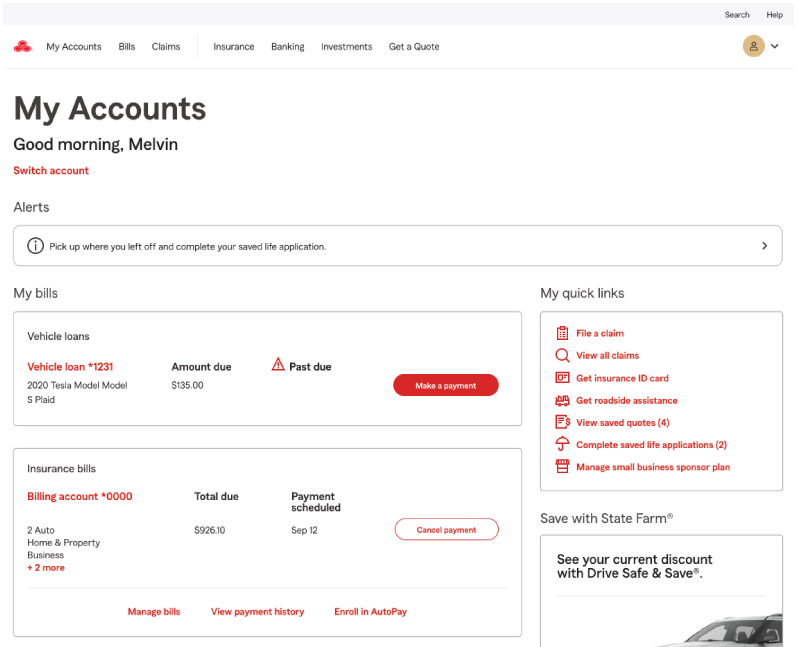
STATE FARM
Team Lead MyAccounts/Senior UX Architect
State Farm is a leading national insurance company. It has more than 58,000 employees, more than 19,000 independent contractor agents and services 83 million policies and accounts throughout the U.S.
Over the past almost 9 years I’ve been a member of StateFarm’s UX Digital Department focused on the enhancement of StateFarm.com and mobile application user experiences. I’ve served as the UX Team Lead/Architect for the StateFarm Mobile App team, Community Offers Program team, StateFarm.com Homepage and Landing pages team, Chat, Voice, and Emerging Technologies, and MyAccounts.
RESPONSIBILITIES
Strategy, User Research, Competitive Analysis, Workflows, Heuristic Evaluations, Wireframes and Prototypes, Creative Direction, Leadership Presentations
MyAccounts Redesign
An optimal My Accounts user experience benefits both customers and companies by providing a seamless platform for managing information, resolving issues, and driving engagement. It empowers customers with convenience and control while reducing support costs, enhancing satisfaction, and strengthening loyalty for the company.
A thorough My Accounts user experience assessment uncovered key areas for improvement and opportunities for growth. However, inadequate page information architecture and content strategy highlighted the need for significant changes to ensure long-term success. With the My Accounts journey recently redesigned, one of the major challenges lied in convincing a cautious product team to commit the time and resources for another overhaul.
Old MyAccounts
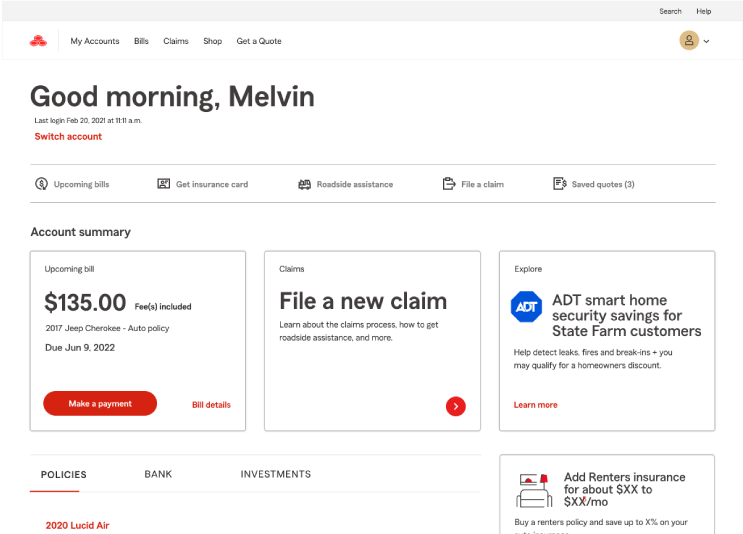
UX Strategy
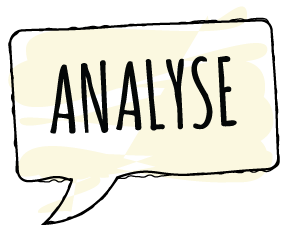
What are the challenges? Where are the opportunities?
Upon joining the My Accounts UX team, I found them in the midst of a comprehensive evaluation of the service journey. The primary focus was on the efficiency of the top 10 self-service tasks frequently performed or desired by authenticated customers, with additional attention given to customer support effectiveness and adherence to corporate design standards. We finalized the effort by delivering a detailed set of observations and recommendations to our Product Team Owners.
Turning recommendations into plans
Many of our proposed ideas were well-received by the Product team, but the prospect of a lengthy, resource-intensive redesign raised concerns about disrupting an already packed roadmap. To address this, we proposed a parallel initiative, independent of the roadmap, that would incorporate smaller, incremental efforts along the way. This approach helped us gain our Product partners’ trust, showing that the experience could be gradually rebuilt without compromising their roadmap or the customer experience.
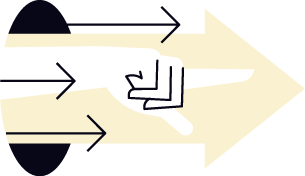

Fostering a One-Team methodology
With our strategy in place, we established a refreshed workflow grounded in a “One Team” methodology to reset the previously strained relationship between Product and UX. As the new lead, my priority was to rebuild trust and demonstrate UX’s ability to deliver measurable value without hindering progress. By adopting the “One Team” approach, we encouraged seamless collaboration, aligning cross-functional objectives and fostering transparency. My goal was to create a workflow where all stakeholders could contribute ideas and feedback throughout the design lifecycle, promoting collective ownership of the outcomes.
Solutions in action
Over the course of a year and a half, we methodically refined the My Accounts experience, starting with the foundation for a modular architecture. Collaborating closely with Product and Development teams, we navigated through Discovery, Ideation, Design, and Implementation, continuously refining our processes to adapt to evolving needs.
Architecture & Content Strategy
To streamline the experience, we began by addressing the most straightforward opportunities for improvement. The MyAccounts landing page was cluttered with redundant content, links, and sections. We hypothesized what could be removed without detracting from the user experience, implemented these changes, and tested the resulting user behavior.
In the StateFarm service journey, MyAccounts acts as a central hub connecting numerous independent applications. Despite adhering to a design system, inconsistencies in design patterns and content often arise when navigating between flows. Close collaboration with other teams was crucial to delivering a cohesive experience across pages and platforms.

Design
Over time, the entire MyAccounts experience underwent the same rigorous process, ensuring a consistent and refined user journey from top to bottom.


Continuous Enhancements
Early returns were very positive, and many of the goals we set out to achieve were accomplished. But a redesign is an ongoing process, not a final destination. It requires continuous evaluation of content and iterative improvements to stay relevant. As technology evolves and user behaviors and expectations change, solutions must adapt to meet new demands.
